April 9 update on COVID-19 in MN: Vaccinations, active cases, hospitalizations climb

Go Deeper.
Create an account or log in to save stories.
Like this?
Thanks for liking this story! We have added it to a list of your favorite stories.
3 things to know
Hospitalization admission, active case trends highest in months; vaccination trends hits a record high
About 44 percent of adults with at least one dose; 29 percent completely vaccinated
Vaccination effort means Minnesota likely won’t see as severe a spike in cases as it saw in November, health commissioner says
Updated 12:05 p.m.
The calendar says spring, but Minnesota’s newest COVID-19 data looks more like winter.
Active case counts haven’t been this high since late December. Hospitalizations and intensive needs are climbing to where they were back in mid-January. Daily deaths are trending at February levels.
The difference, though, is that Minnesota’s vaccination effort is rolling now, with the state seemingly on track to have 50 percent of adults vaccinated within two weeks.
Minnesota officials have repeatedly described the state’s current COVID-19 situation as a kind of competition to inoculate as many Minnesotans as possible before the disease variants get a stronger foothold in the state.
Turn Up Your Support
MPR News helps you turn down the noise and build shared understanding. Turn up your support for this public resource and keep trusted journalism accessible to all.
Vaccination trend hits record high
Friday’s Health Department data showed nearly 1.3 million Minnesotans fully inoculated while more than 1.9 million have received at least one dose, including about 83 percent of residents age 65 and older.
The agency reported about 70,000 more vaccinations. The seven-day trend is the highest since vaccinations began in late December.
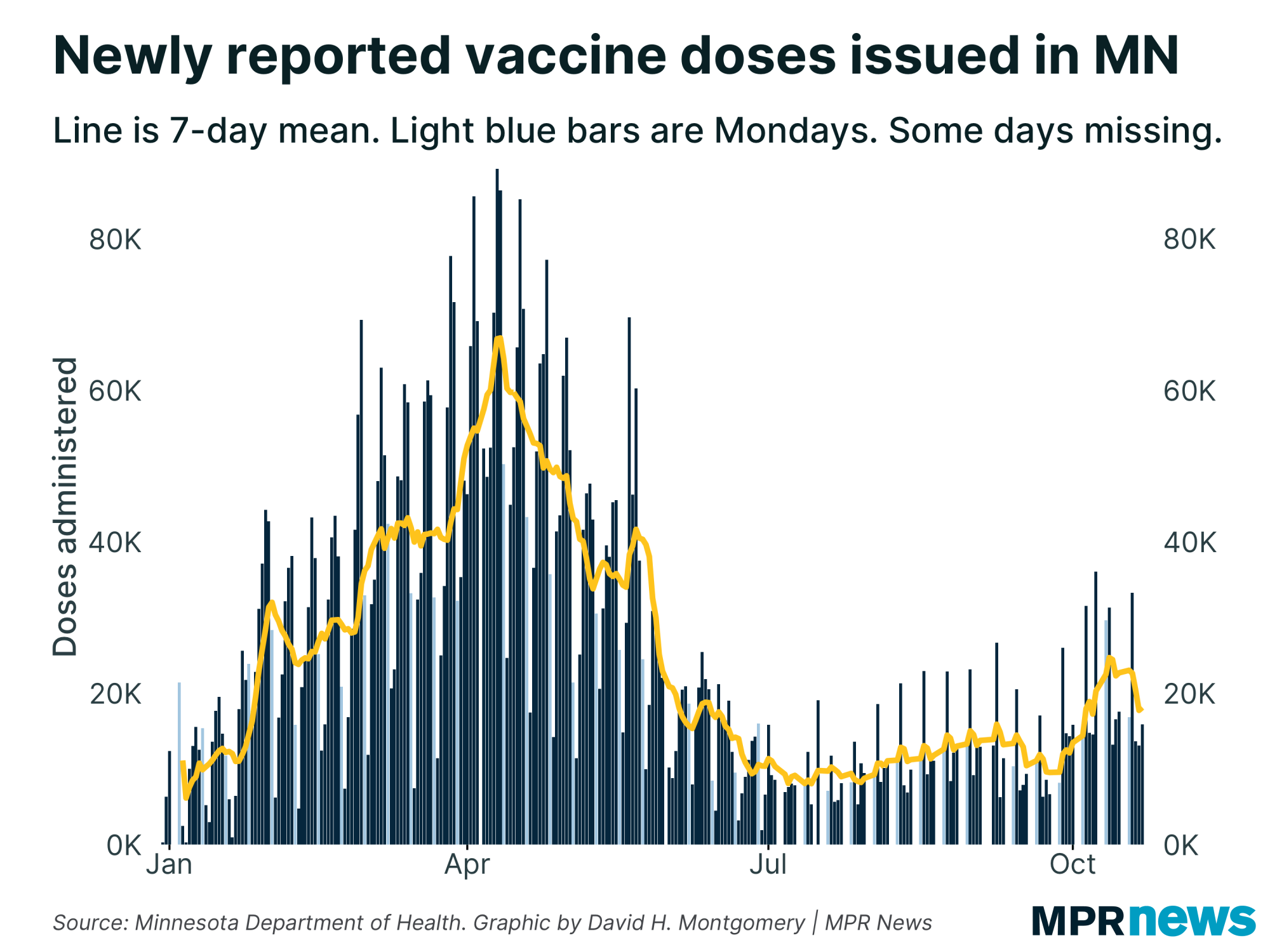
Thanks to the vaccination push, Minnesota likely won’t see as severe a spike in cases this spring as it saw in November and December, but the pandemic isn’t over, Minnesota Health Commissioner Jan Malcolm told reporters earlier this week.
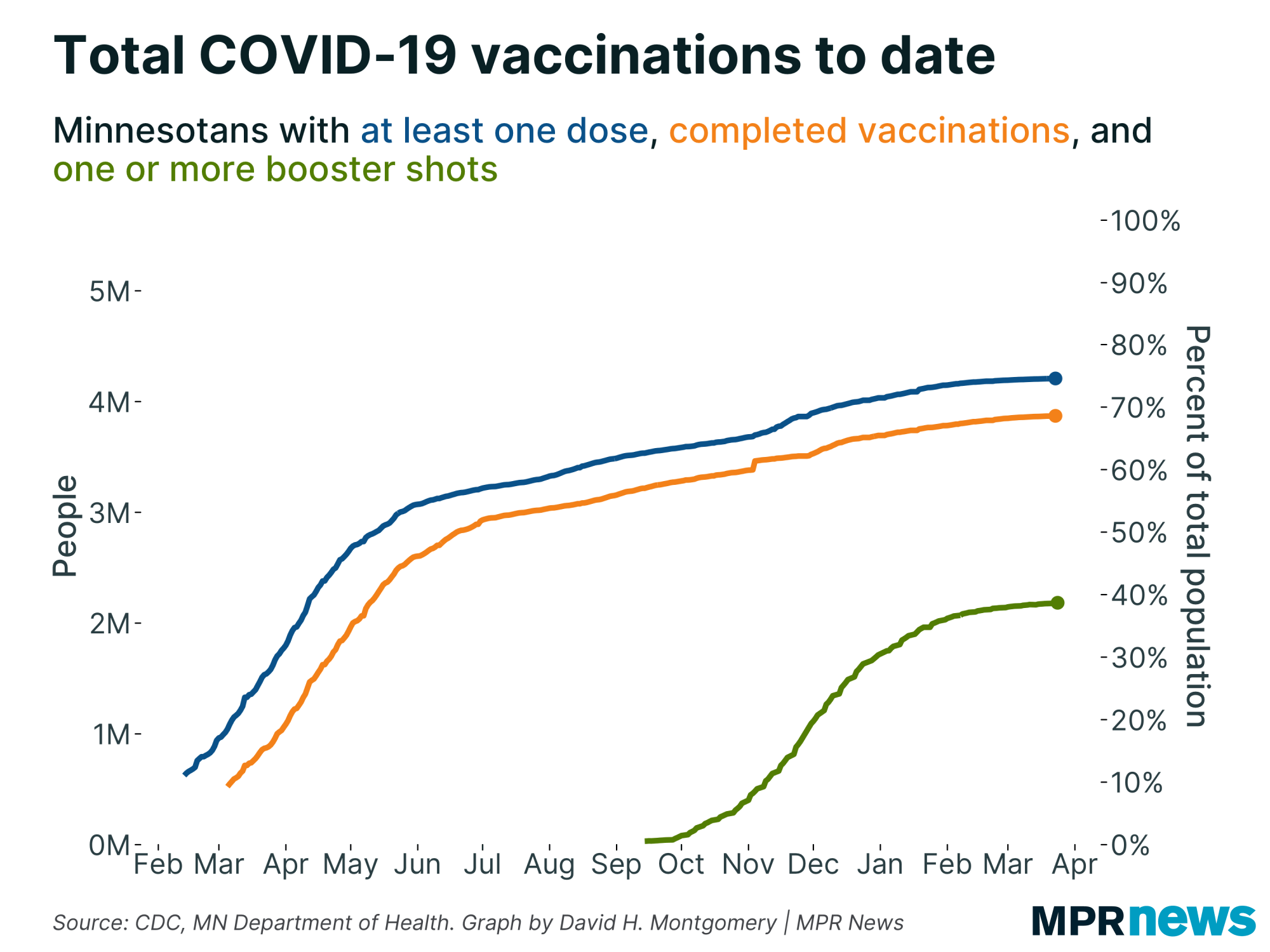
“We’re definitely not out of the woods yet,” Malcolm added, noting that the seven-day positive test rate for the disease is back up at 6 percent. A 5 percent rate is a warning sign of growing spread.
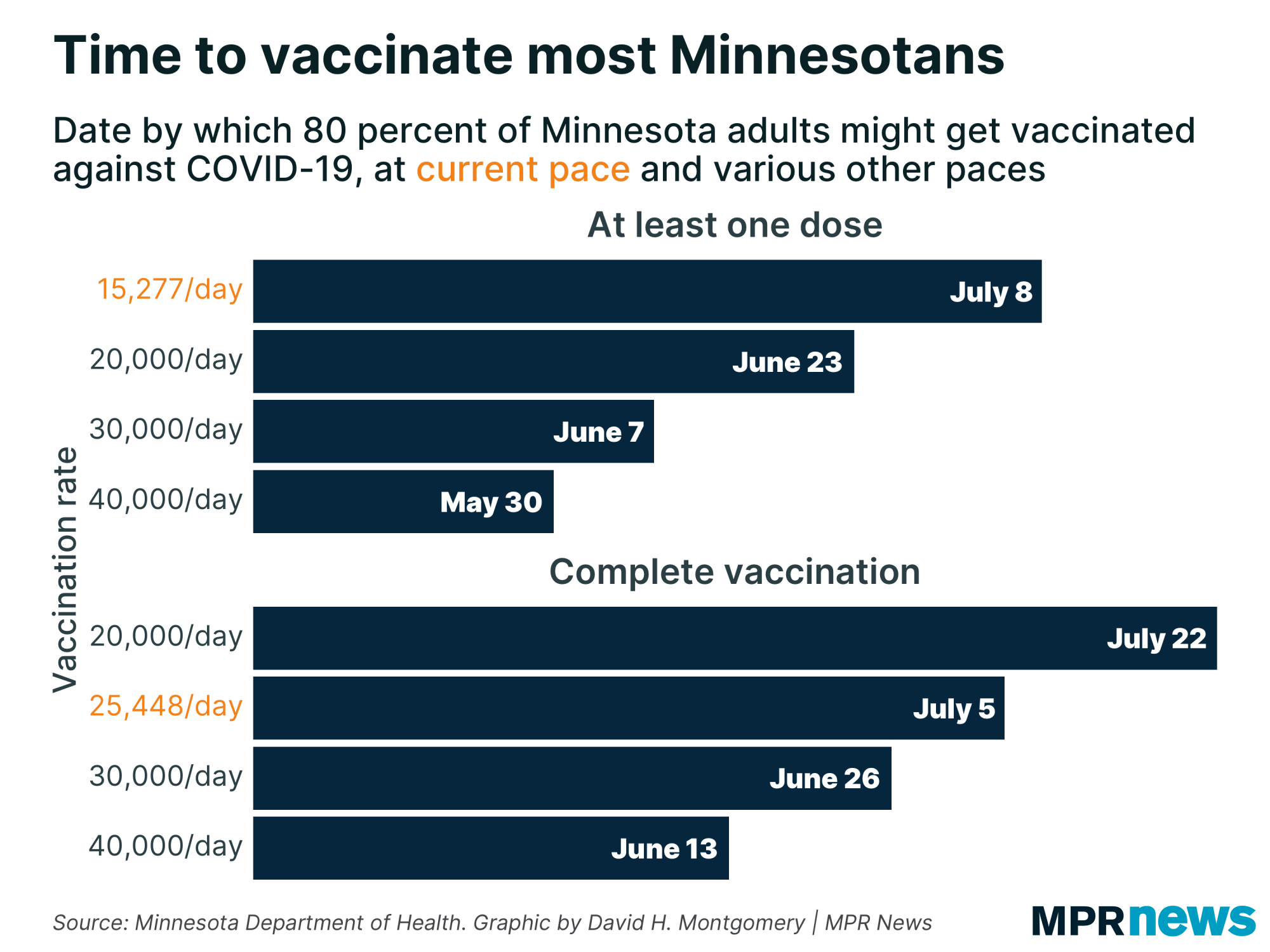
Hospitalizations climbing, skewing younger
Friday’s COVID-19 numbers reinforce Malcolm’s warnings that the pandemic isn’t over.
Hospitalizations, for instance, have climbed significantly in the past few weeks to levels not seen since January. The most recent agency data shows 595 people with COVID-19 in Minnesota hospitals; 134 needed intensive care.
ICU needs have doubled over the past month.
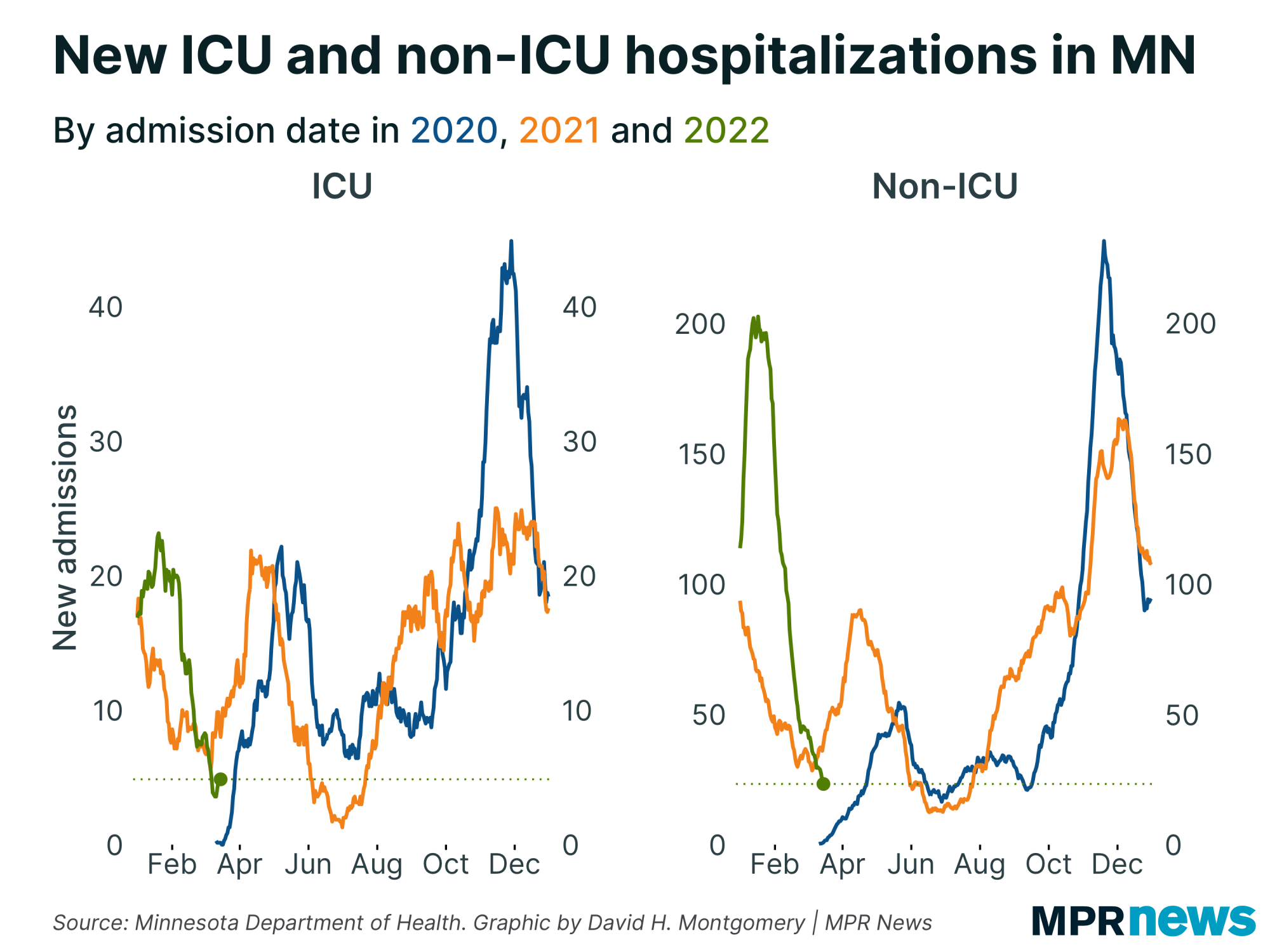
The age of those needing hospitalization has been skewing younger. The average age of people hospitalized during the pandemic is 65, but it was 57 years old from March 23 to 29, Dr. Ruth Lynfield, the state’s epidemiologist, said earlier this week.
The number of known, active cases has been trending upward over the past few weeks, with more than 18,000 as of Friday’s report — marking more than three weeks with active daily counts above 10,000.
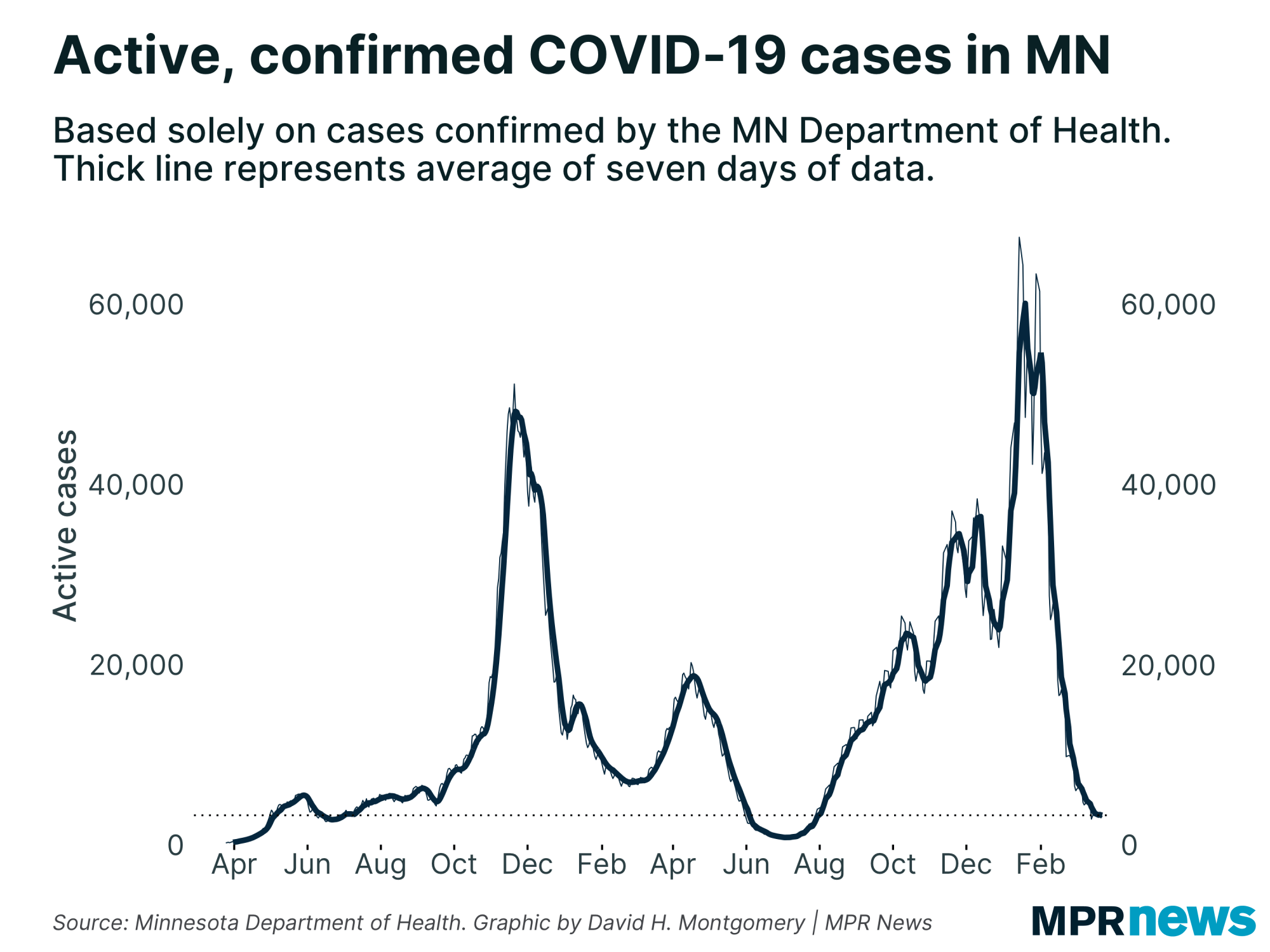
It’s also the first time since December that active cases were greater than 18,000.
While still low compared to late November and early December, the rising trend is notable given the worries over the rise of the highly contagious U.K. COVID-19 variant, which state health officials suspect is driving the current upswing.
The state has now confirmed about 1,600 cases of the U.K. strain, Lynfield said Thursday, adding that it’s linked to five deaths here and likely responsible for the majority of the spread happening now.
Ten deaths reported on Friday raised Minnesota’s overall pandemic death toll to 6,932. Among those who’ve died, about 62 percent had been living in long-term care or assisted living facilities; most had underlying health problems.
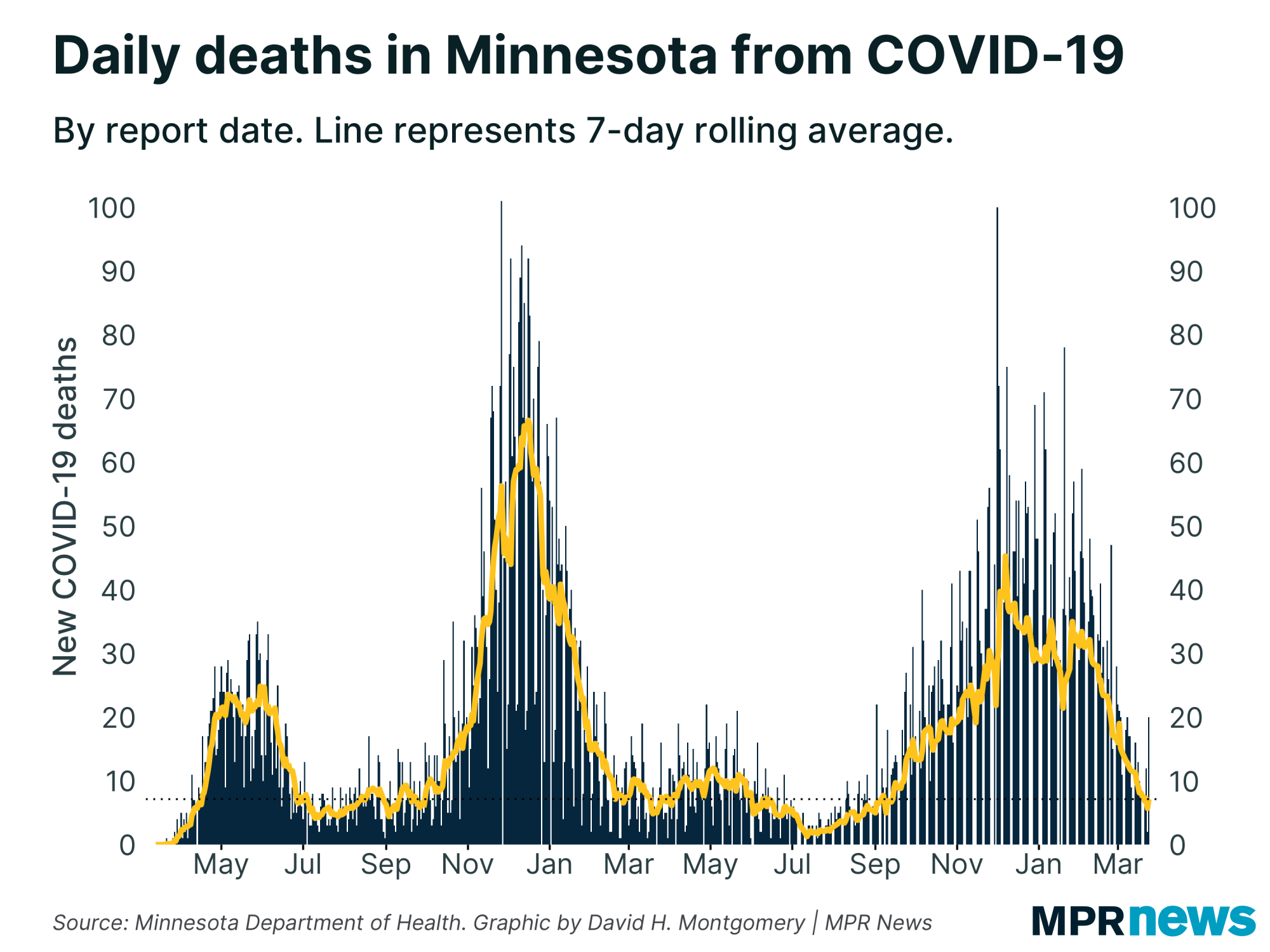
The state has recorded 537,828 total confirmed or probable cases so far in the pandemic, including 2,659 posted Friday. About 95 percent of Minnesotans known to be infected with COVID-19 in the pandemic have recovered to the point where they no longer need to be isolated.
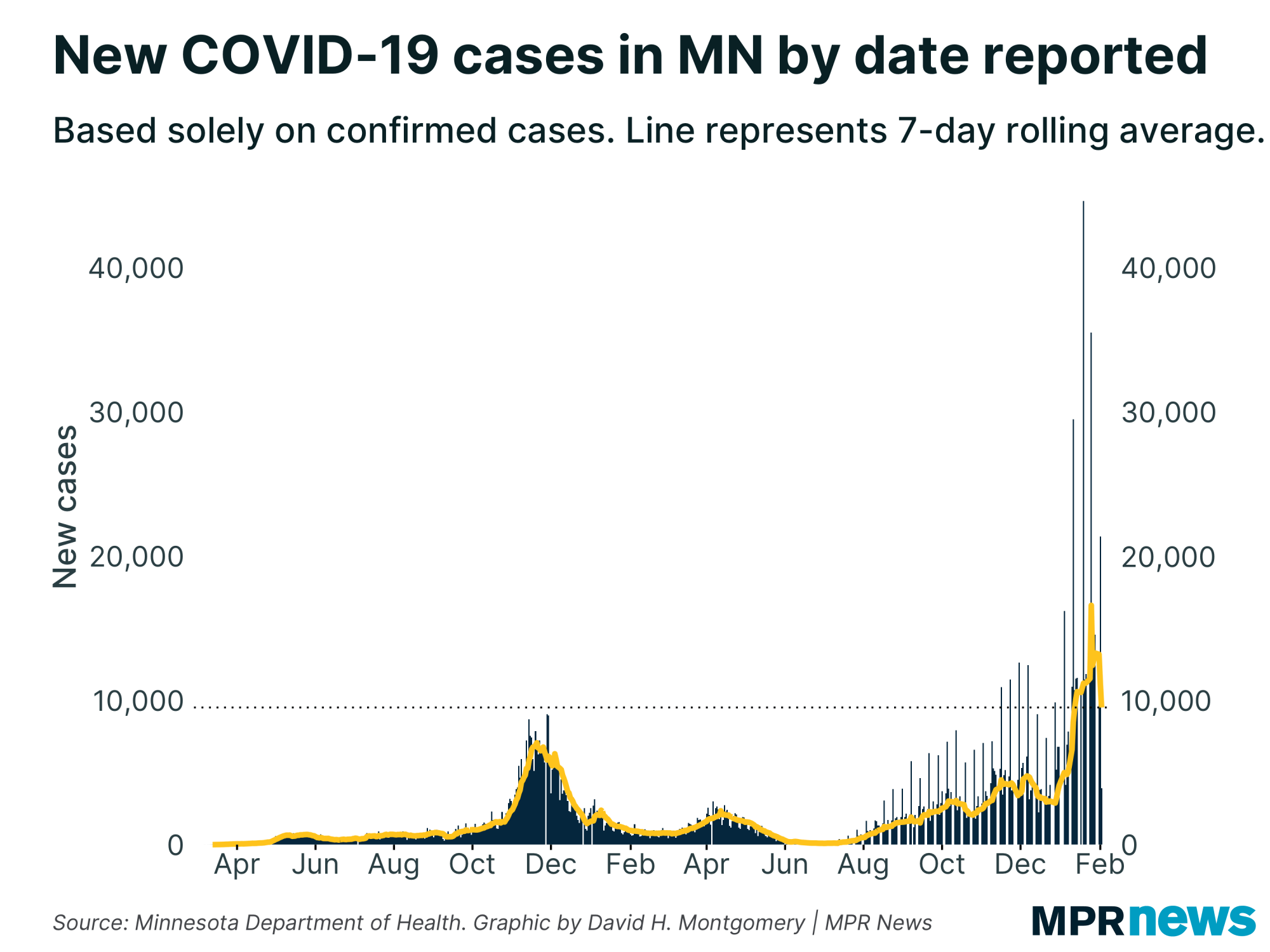
Regional hot spots bubble
Regionally, all parts of Minnesota are in better shape than they were in late November and early December. The latest numbers, however, show cases creeping up across the state.
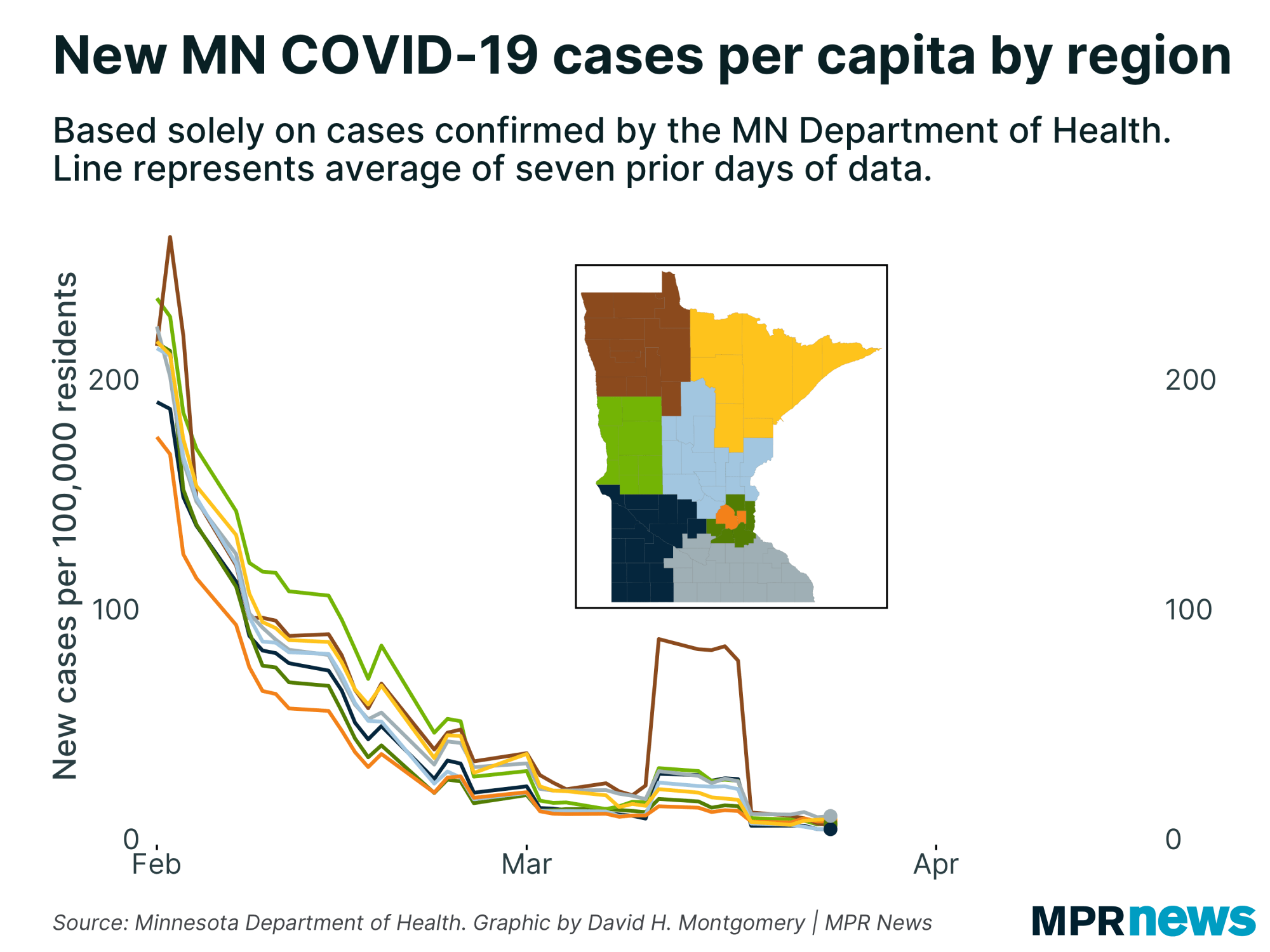
Public health leaders continue to keep watch on clusters popping up over in recent weeks in the southwest Twin Cities metro area as well as Mankato in southern Minnesota, in central Minnesota and around Aurora and Ely in the northeast.
Cases spread across age groups
People in their 20s still make up the age bracket with the state’s largest number of confirmed cases — more than 100,000 since the pandemic began, including more than 52,000 among those ages 20 to 24.
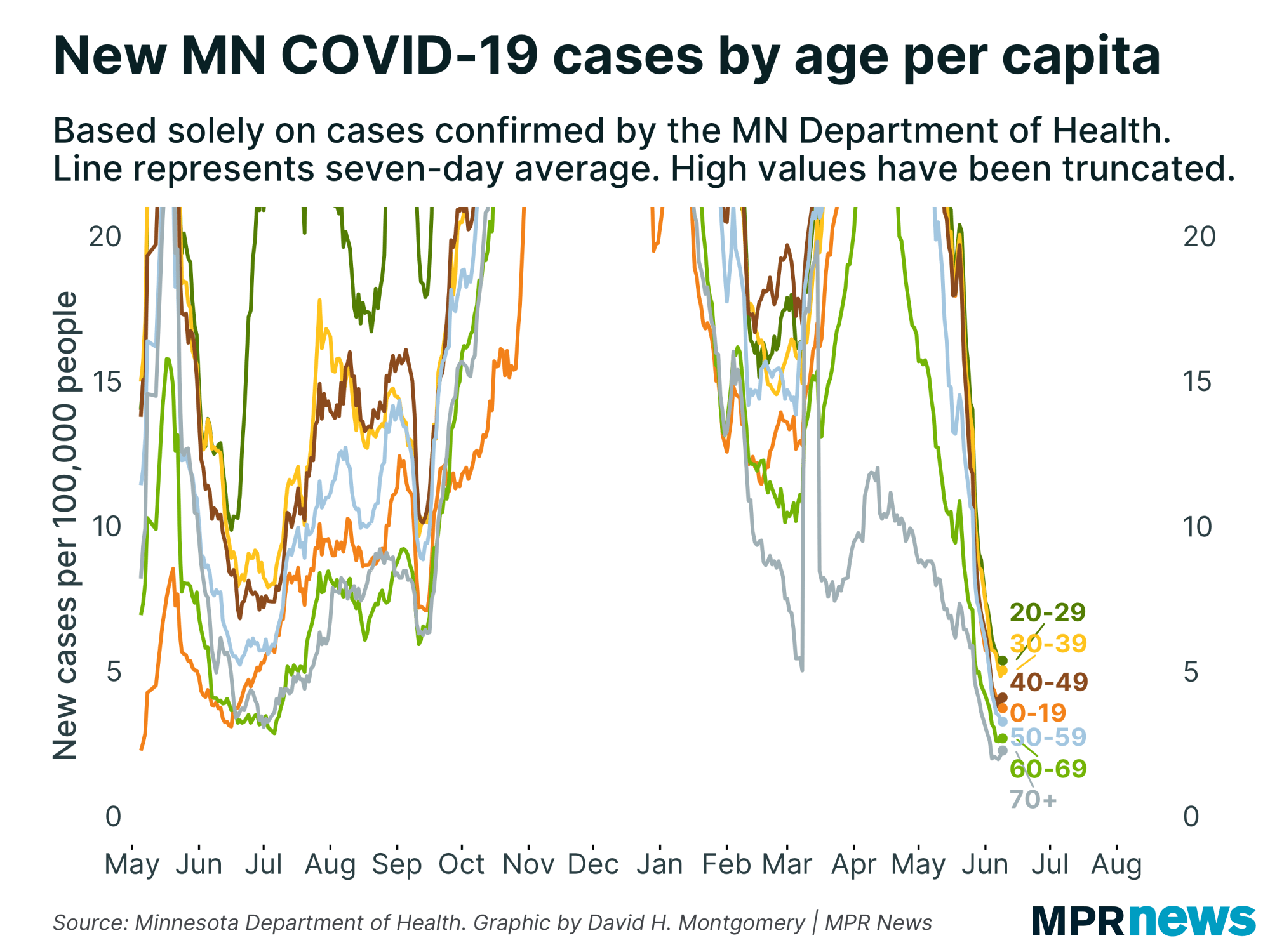
The number of high school-age youth confirmed with the disease has also grown, with more than 42,000 total cases among those ages 15 to 19 since the pandemic began.
With kids increasingly returning to school buildings and sports, Minnesota public health officials are urging Minnesota families with children to get tested every two weeks for COVID-19 until the end of the school year.
Although young people are less likely to feel the worst effects of the disease and end up hospitalized, experts worry they will spread it unknowingly to older relatives and members of other vulnerable populations. Those with the coronavirus can spread it when they don’t have symptoms.
Caseloads among people of color
In Minnesota and across the country, COVID-19 has hit communities of color disproportionately hard in both cases and deaths. That’s been especially true for Minnesotans of Hispanic descent for much of the pandemic.
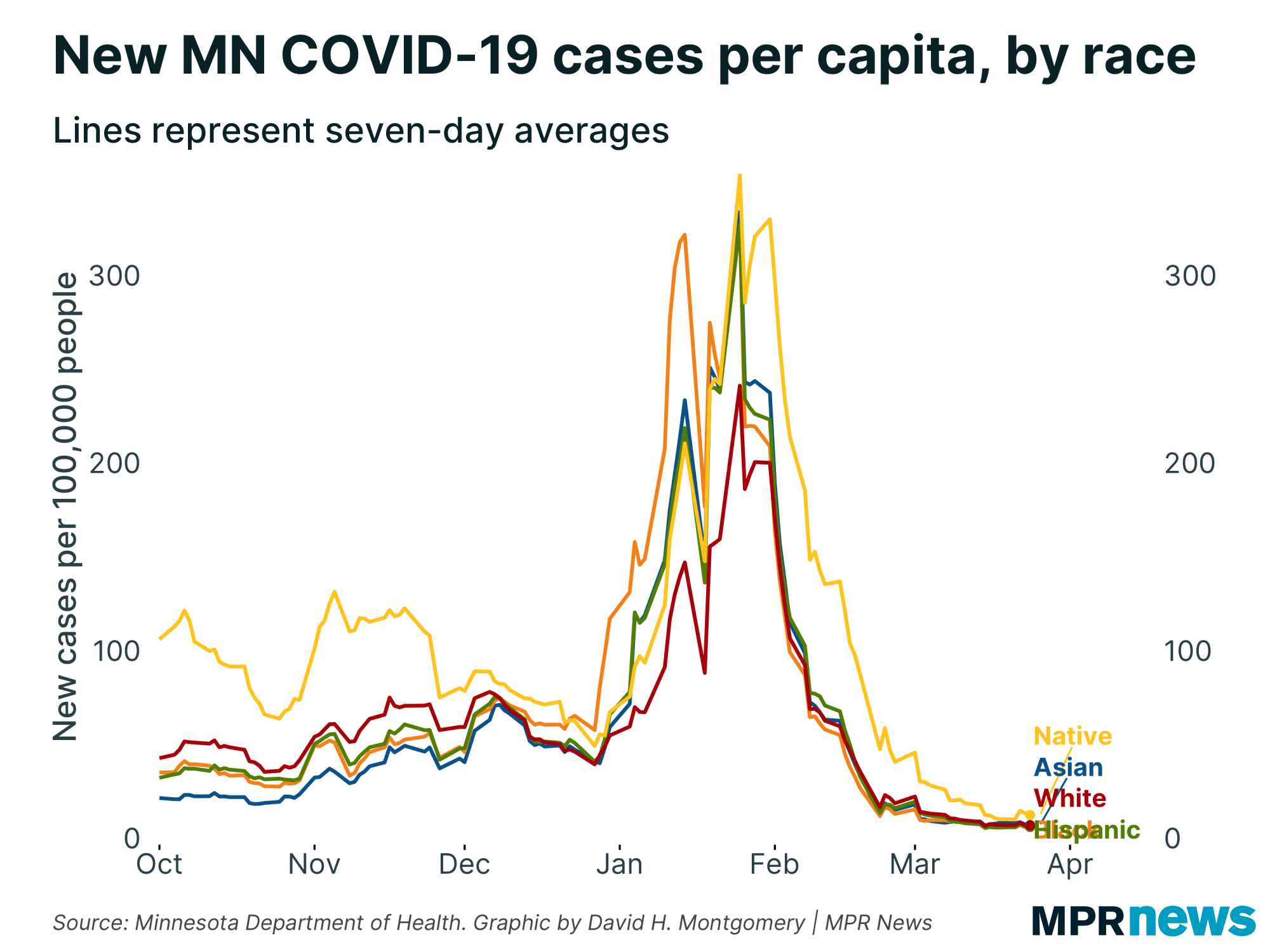
Even as new case counts continue to track well below their late November, early December peaks, the data shows Latino people continue to be hit hard.
Distrust of the government, together with deeply rooted health and economic disparities, have hampered efforts to boost testing among communities of color, officials say, especially among unauthorized immigrants who fear their personal information may be used to deport them.
Officials have acknowledged that distrust by communities of color has been a problem during the pandemic. They’ve offered up some data on vaccinations broken down by race and ethnicity that they’re updating regularly.
COVID-19 in Minnesota
Data in these graphs are based on the Minnesota Department of Health's cumulative totals released at 11 a.m. daily. You can find more detailed statistics on COVID-19 at the Health Department website.
Top headlines
As vaccine eligibility expands, one southern MN health department recalibrates: Human Services of Faribault and Martin Counties, a two-county public health department in southern Minnesota, requested 300 doses of vaccine to administer this week. But they’re struggling to fill appointment slots — and dealing with no-shows. So they’re asking the state Health Department to reallocate their share.
COVID-19 deaths of tribal elders leave a void: Native Americans have the highest COVID-19 mortality rate of any population in the U.S. And for tribes working to revitalize language and culture, the loss of elders to COVID-19 leaves an especially painful void.
Even with prospect of aid, Minnesota school budgets in dire shape: The coronavirus hasn’t just upended classrooms around the state — it’s wreaking havoc on district budgets, which are largely determined by enrollment. State and federal lawmakers are considering and passing billions of new dollars in education funding, but Minnesota districts are still laying off staff and closing schools.
Vaccination campaign aims to protect Muslims from COVID ahead of Ramadan: The Muslim American Society of Minnesota obtained 7,000 doses of vaccine from the state and is rushing to put shots in people's arms before the holy month begins next week.
Feeling guilty, anxious about your COVID-19 vaccine search? You're not alone: The legions of vaccine selfies make it clear that getting the shot is a huge relief for many. But some are experiencing other emotions — anxiety, if they haven't gotten vaccinated yet, and sometimes guilt, if they were able to secure an appointment.




